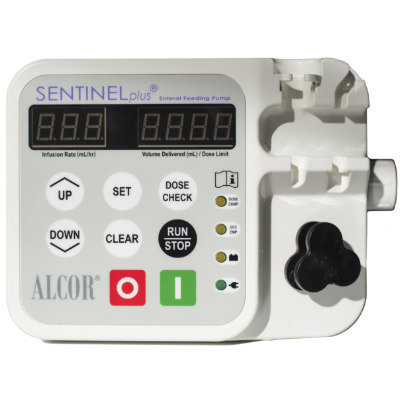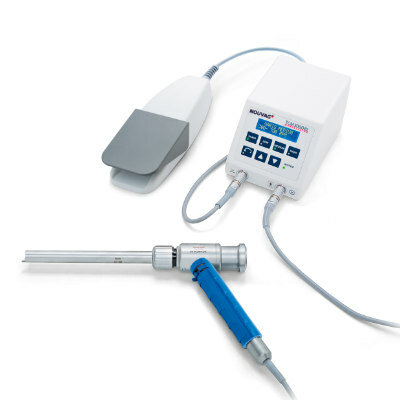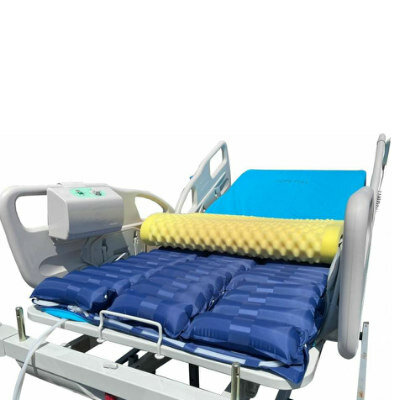New app Helps Monitor Disease and Injury Trends
|
By HospiMedica International staff writers Posted on 28 Dec 2015 |

Image: A health worker collects information via the VAI app (Photo courtesy of the University of Melbourne).
A revolutionary new app for tablets and mobile phones captures and records accurate global causes of death data.
The app, developed by an international consortium of researchers led by the Institute for Health Metrics and Evaluation (IHME; Seattle, WA, USA) at the University of Washington (Seattle, WA, USA), and the University of Melbourne (VIC, Australia), is basically a shortened verbal autopsy instrument (VAI) for recording mortality data in settings with no or unreliable vital registration systems.
The researchers first established a rank order of individual questions based on the Population Health Metrics Research Consortium (PHMRC) gold standard VAI according to their importance in predicting causes of death. Second, they reduced the size of the instrument by dropping questions in reverse order of importance. They then assessed the predictive performance of the instrument as questions were removed at the individual level by calculating chance-corrected concordance, and at the population level with cause-specific mortality fraction (CSMF) accuracy.
The final result was an app that shortened the full PHMRC VAI by almost 50%, without a significant drop in performance. While the full PHMRC VAI had 183, 127, and 149 questions for adult, child, and neonatal deaths (respectively), the shortened instrument developed had 109, 69, and 67 questions, respectively, representing a decrease in the total number of questions of 40%–55%. App performance was then validated using hand-held electronic tablets. A study describing the development and testing of the app was published on December 16, 2015, in BMC Medicine.
“Without accurate cause of death information, we can't monitor disease and injury trends, we can't keep track of emerging health problems, and we don't have any markers to show us whether programs and policies are actually working,” said senior author Professor Laureate Alan Lopez, PhD, of the University of Melbourne. “Up-to-date, reliable information on what people are dying from and at what age is really important for policies to prevent premature death.
“Our app provides a way to do this, quickly, simply, cheaply and effectively, in real time, with the power of technology. Our method involves data collection by health workers, registrars and village officials, who use the app to administer the surveys,” concluded Prof. Lopez. “It requires very minimal training. The data is fed into a computer, which makes a diagnosis. This way doctors are free to do what they do best, which is providing essential medical care to their communities.”
Worldwide, two in three deaths—about 35 million deaths each year—are unregistered. In addition, around 180 countries that are home to 80% of the world's population do not collect reliable cause of death statistics. Another problem is that in many regions around the world that do collect data, only registered doctors are qualified to determine a cause of death, but the process is expensive, time-consuming, and can be unreliable.
Related Links:
Institute for Health Metrics and Evaluation
University of Washington
University of Melbourne
The app, developed by an international consortium of researchers led by the Institute for Health Metrics and Evaluation (IHME; Seattle, WA, USA) at the University of Washington (Seattle, WA, USA), and the University of Melbourne (VIC, Australia), is basically a shortened verbal autopsy instrument (VAI) for recording mortality data in settings with no or unreliable vital registration systems.
The researchers first established a rank order of individual questions based on the Population Health Metrics Research Consortium (PHMRC) gold standard VAI according to their importance in predicting causes of death. Second, they reduced the size of the instrument by dropping questions in reverse order of importance. They then assessed the predictive performance of the instrument as questions were removed at the individual level by calculating chance-corrected concordance, and at the population level with cause-specific mortality fraction (CSMF) accuracy.
The final result was an app that shortened the full PHMRC VAI by almost 50%, without a significant drop in performance. While the full PHMRC VAI had 183, 127, and 149 questions for adult, child, and neonatal deaths (respectively), the shortened instrument developed had 109, 69, and 67 questions, respectively, representing a decrease in the total number of questions of 40%–55%. App performance was then validated using hand-held electronic tablets. A study describing the development and testing of the app was published on December 16, 2015, in BMC Medicine.
“Without accurate cause of death information, we can't monitor disease and injury trends, we can't keep track of emerging health problems, and we don't have any markers to show us whether programs and policies are actually working,” said senior author Professor Laureate Alan Lopez, PhD, of the University of Melbourne. “Up-to-date, reliable information on what people are dying from and at what age is really important for policies to prevent premature death.
“Our app provides a way to do this, quickly, simply, cheaply and effectively, in real time, with the power of technology. Our method involves data collection by health workers, registrars and village officials, who use the app to administer the surveys,” concluded Prof. Lopez. “It requires very minimal training. The data is fed into a computer, which makes a diagnosis. This way doctors are free to do what they do best, which is providing essential medical care to their communities.”
Worldwide, two in three deaths—about 35 million deaths each year—are unregistered. In addition, around 180 countries that are home to 80% of the world's population do not collect reliable cause of death statistics. Another problem is that in many regions around the world that do collect data, only registered doctors are qualified to determine a cause of death, but the process is expensive, time-consuming, and can be unreliable.
Related Links:
Institute for Health Metrics and Evaluation
University of Washington
University of Melbourne
Latest Health IT News
- Machine Learning Model Improves Mortality Risk Prediction for Cardiac Surgery Patients
- Strategic Collaboration to Develop and Integrate Generative AI into Healthcare
- AI-Enabled Operating Rooms Solution Helps Hospitals Maximize Utilization and Unlock Capacity
- AI Predicts Pancreatic Cancer Three Years before Diagnosis from Patients’ Medical Records
- First Fully Autonomous Generative AI Personalized Medical Authorizations System Reduces Care Delay
- Electronic Health Records May Be Key to Improving Patient Care, Study Finds
- AI Trained for Specific Vocal Biomarkers Could Accurately Predict Coronary Artery Disease
- First-Ever AI Test for Early Diagnosis of Alzheimer’s to Be Expanded to Diagnosis of Parkinson’s Disease
- New Self-Learning AI-Based Algorithm Reads Electrocardiograms to Spot Unseen Signs of Heart Failure
- Autonomous Robot Performs COVID-19 Nasal Swab Tests

- Statistical Tool Predicts COVID-19 Peaks Worldwide
- Wireless-Controlled Soft Neural Implant Stimulates Brain Cells
- Tiny Polymer Stent Could Treat Pediatric Urethral Strictures
- Human Torso Simulator Helps Design Brace Innovations
- 3D Bioprinting Rebuilds the Human Heart
- Nanodrone Detects Toxic Gases in Hazardous Environments
Channels
Artificial Intelligence
view channel
AI-Powered Algorithm to Revolutionize Detection of Atrial Fibrillation
Atrial fibrillation (AFib), a condition characterized by an irregular and often rapid heart rate, is linked to increased risks of stroke and heart failure. This is because the irregular heartbeat in AFib... Read more
AI Diagnostic Tool Accurately Detects Valvular Disorders Often Missed by Doctors
Doctors generally use stethoscopes to listen for the characteristic lub-dub sounds made by heart valves opening and closing. They also listen for less prominent sounds that indicate problems with these valves.... Read moreCritical Care
view channel
Deep-Learning Model Predicts Arrhythmia 30 Minutes before Onset
Atrial fibrillation, the most common type of cardiac arrhythmia worldwide, affected approximately 59 million people in 2019. Characterized by an irregular and often rapid heart rate, atrial fibrillation... Read more
Breakthrough Technology Combines Detection and Treatment of Nerve-Related Disorders in Single Procedure
The peripheral nervous system (PNS) serves as the communication network that links the brain and spinal cord to every other part of the body. It consists of two parts: the somatic nervous system, which... Read moreSurgical Techniques
view channel
Hydrogel-Based Miniaturized Electric Generators to Power Biomedical Devices
The development of engineered devices that can harvest and convert the mechanical motion of the human body into electricity is essential for powering bioelectronic devices. This mechanoelectrical energy... Read moreWearable Technology Monitors and Analyzes Surgeons' Posture during Long Surgical Procedures
The physical strain associated with the static postures maintained by neurosurgeons during long operations can lead to fatigue and musculoskeletal problems. An objective assessment of surgical ergonomics... Read more.jpg)
Custom 3D-Printed Orthopedic Implants Transform Joint Replacement Surgery
The evolving field of 3D printing is revolutionizing orthopedics, especially for individuals requiring joint replacement surgeries where traditional implants fail to provide a solution. Although most people... Read more
Cutting-Edge Imaging Platform Detects Residual Breast Cancer Missed During Lumpectomy Surgery
Breast cancer is becoming increasingly common, with statistics indicating that 1 in 8 women will develop the disease in their lifetime. Lumpectomy remains the predominant surgical intervention for treating... Read morePatient Care
view channel
Surgical Capacity Optimization Solution Helps Hospitals Boost OR Utilization
An innovative solution has the capability to transform surgical capacity utilization by targeting the root cause of surgical block time inefficiencies. Fujitsu Limited’s (Tokyo, Japan) Surgical Capacity... Read more
Game-Changing Innovation in Surgical Instrument Sterilization Significantly Improves OR Throughput
A groundbreaking innovation enables hospitals to significantly improve instrument processing time and throughput in operating rooms (ORs) and sterile processing departments. Turbett Surgical, Inc.... Read more
Next Gen ICU Bed to Help Address Complex Critical Care Needs
As the critical care environment becomes increasingly demanding and complex due to evolving hospital needs, there is a pressing requirement for innovations that can facilitate patient recovery.... Read moreGroundbreaking AI-Powered UV-C Disinfection Technology Redefines Infection Control Landscape
Healthcare-associated infection (HCAI) is a widespread complication in healthcare management, posing a significant health risk due to its potential to increase patient morbidity and mortality, prolong... Read morePoint of Care
view channel
Critical Bleeding Management System to Help Hospitals Further Standardize Viscoelastic Testing
Surgical procedures are often accompanied by significant blood loss and the subsequent high likelihood of the need for allogeneic blood transfusions. These transfusions, while critical, are linked to various... Read more
Point of Care HIV Test Enables Early Infection Diagnosis for Infants
Early diagnosis and initiation of treatment are crucial for the survival of infants infected with HIV (human immunodeficiency virus). Without treatment, approximately 50% of infants who acquire HIV during... Read more
Whole Blood Rapid Test Aids Assessment of Concussion at Patient's Bedside
In the United States annually, approximately five million individuals seek emergency department care for traumatic brain injuries (TBIs), yet over half of those suspecting a concussion may never get it checked.... Read more
New Generation Glucose Hospital Meter System Ensures Accurate, Interference-Free and Safe Use
A new generation glucose hospital meter system now comes with several features that make hospital glucose testing easier and more secure while continuing to offer accuracy, freedom from interference, and... Read moreBusiness
view channel
Johnson & Johnson Acquires Cardiovascular Medical Device Company Shockwave Medical
Johnson & Johnson (New Brunswick, N.J., USA) and Shockwave Medical (Santa Clara, CA, USA) have entered into a definitive agreement under which Johnson & Johnson will acquire all of Shockwave’s... Read more
















